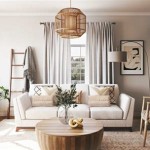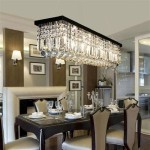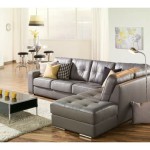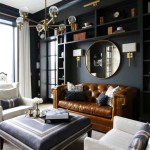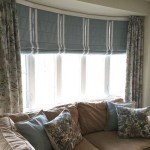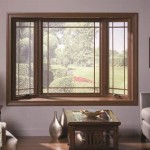Primitive Pictures For Living Room: A Guide to Rustic Charm
The incorporation of primitive pictures in living room décor offers a unique opportunity to infuse spaces with rustic charm and historical reference. This decorating style embraces a raw, unrefined aesthetic, often drawing inspiration from early American folk art, rural landscapes, and the simplicity of bygone eras. Choosing appropriate primitive pictures requires careful consideration of the existing interior design, the desired atmosphere, and the artistic styles that resonate with the homeowner.
Primitive art, also known as folk art or naïve art, is characterized by its lack of formal training in traditional art techniques. Artists creating in this style often prioritize expression and storytelling over technical precision. This results in pieces with simplified forms, bold colors, and a certain endearing awkwardness that contributes to their appeal. The use of primitive pictures in a living room can create a warm, inviting atmosphere that evokes a sense of nostalgia and connection to the past.
The term "primitive" in this context does not denote inferiority. Rather, it acknowledges the absence of academic training and the reliance on intuition and personal experience. This inherent honesty and unpretentious quality are precisely what make primitive pictures so appealing for creating a comfortable and authentic living space. When selecting primitive pictures, it’s important to consider the subject matter, the color palette, and the overall mood that the artwork conveys. These factors will determine how well the pieces integrate into the existing design and contribute to the desired aesthetic.
Understanding the Characteristics of Primitive Art
Primitive art possesses several distinct characteristics that distinguish it from other art forms. One of the most prominent features is the simplified representation of forms. Objects and figures are often depicted in a stylized manner, with details minimized or exaggerated for effect. Proportions may be distorted, perspective absent, and the overall composition might appear somewhat flat and two-dimensional. This lack of realism is not a flaw but rather a deliberate stylistic choice that emphasizes the artist's subjective interpretation of the subject matter.
Another defining characteristic of primitive art is the use of bold, often unmixed colors. Artists typically employ a limited palette of readily available pigments, applying them in flat, unmodulated areas. This creates a sense of vibrancy and immediacy, drawing the viewer's attention to the essential elements of the composition. The colors used often have symbolic significance, reflecting the artist's personal beliefs or cultural associations.
Furthermore, primitive art frequently features narrative elements, telling stories or depicting scenes from everyday life. These narratives may be simple and straightforward, or they may contain hidden meanings and symbolic references. The stories conveyed in these pictures often provide insights into the values, beliefs, and experiences of the people who created them. This narrative aspect adds depth and interest to primitive art, making it a compelling addition to any living room setting.
Finally, the materials used in primitive art are often readily available and inexpensive. Artists may employ materials such as wood, canvas, paper, or even fabric scraps to create their works. The use of humble materials further emphasizes the unpretentious nature of the art form and its connection to everyday life. This characteristic makes primitive pictures accessible and relatable, allowing viewers to appreciate the artistry without feeling intimidated by the perceived sophistication of high art.
Selecting Primitive Pictures for Your Living Room
Choosing the right primitive pictures for a living room requires careful consideration of several factors. First, it is important to assess the existing decorating style and determine how primitive art will complement or contrast with it. If the living room already features a rustic or farmhouse aesthetic, primitive pictures will naturally blend in and enhance the overall atmosphere. However, primitive art can also be effectively incorporated into more modern or contemporary settings to create a striking contrast and add a touch of warmth and character.
The subject matter of the pictures is another crucial consideration. Common themes in primitive art include landscapes, portraits, animals, and scenes from everyday life. When selecting pictures for a living room, it is important to choose subjects that resonate with the homeowner and contribute to the desired mood and atmosphere. For example, a landscape depicting a rural scene may evoke feelings of peace and tranquility, while a portrait of a historical figure may add a sense of gravitas and historical significance.
The size and scale of the pictures should also be carefully considered. Larger pictures can make a bold statement and serve as focal points in the room, while smaller pictures can be grouped together to create a more intimate and personal display. The size of the pictures should be proportional to the size of the wall and the surrounding furniture. It is important to avoid overcrowding the space with too many pictures, as this can create a cluttered and overwhelming effect.
Finally, the framing of the pictures can significantly impact their overall appearance. Primitive pictures often look best when framed in simple, rustic frames made from wood or metal. The frame should complement the style of the artwork and enhance its overall aesthetic. Avoid using overly ornate or elaborate frames, as these can detract from the simplicity and authenticity of the primitive art.
Incorporating Primitive Pictures into Your Design Scheme
Once the primitive pictures have been selected, it is important to incorporate them into the living room design scheme in a thoughtful and intentional way. One effective way to do this is to create a gallery wall featuring a collection of primitive pictures. This allows for a diverse range of subjects, styles, and sizes to be displayed together, creating a visually engaging and dynamic focal point. When creating a gallery wall, it is important to consider the spacing between the pictures and the overall balance of the composition.
Another option is to display a single, large primitive picture above a fireplace or sofa. This can create a dramatic statement and anchor the space. The picture should be carefully selected to complement the existing furniture and décor, and it should be hung at eye level for optimal viewing. The surrounding walls can be painted in a complementary color to further enhance the impact of the artwork.
Primitive pictures can also be incorporated into a living room by displaying them on shelves or mantels. This allows for a more informal and eclectic approach to decorating. The pictures can be mixed and matched with other decorative objects, such as pottery, candles, and books, to create a visually interesting and layered display. It is important to consider the overall balance and composition of the display, ensuring that the various elements work together harmoniously.
Furthermore, consider using primitive pictures as part of a themed display. For example, one could create a grouping of pictures all depicting animals or landscapes. This creates a cohesive look and allows the viewer to appreciate the artist's unique perspective on a particular subject. Themed displays can be particularly effective in creating a specific mood or atmosphere in the living room.
The lighting in the living room should also be taken into consideration when incorporating primitive pictures. Proper lighting can enhance the colors and details of the artwork, making it more visually appealing. Avoid placing pictures in direct sunlight, as this can cause them to fade or deteriorate over time. Instead, use artificial lighting, such as spotlights or track lighting, to illuminate the pictures and create a warm and inviting ambiance.
Finally, remember that the goal is to create a living space that reflects personal taste and style. Don't be afraid to experiment with different arrangements and combinations until a look that feels comfortable and authentic is achieved. The beauty of primitive art is that it is inherently forgiving and adaptable, allowing for a wide range of creative expression. By embracing the simplicity and charm of primitive pictures, a living room can be transformed into a warm, inviting, and historically rich space.

Country Vintage Colonial Primitive Usa Durable Fabrics Available On Lancer Homespun Collection

Country Style Living Room Decor Inspiration

Country Sampler

Country Collections Kreamer Brothers Furniture South Central Pa

Primitive Decor Ideas On Stylish Home Decorating Decoholic

63 Rustic Living Room Ideas Primitive Decorating Country Colonial Decor

For Best Living Rooms Primitive Decor

Primitive Farmhouse Fall Home Tour My Rustic House

38 Primitive Decor Ideas For A Cozy Rustic Home

Primitive Country Decorating Ideas Best Decor
See Also


